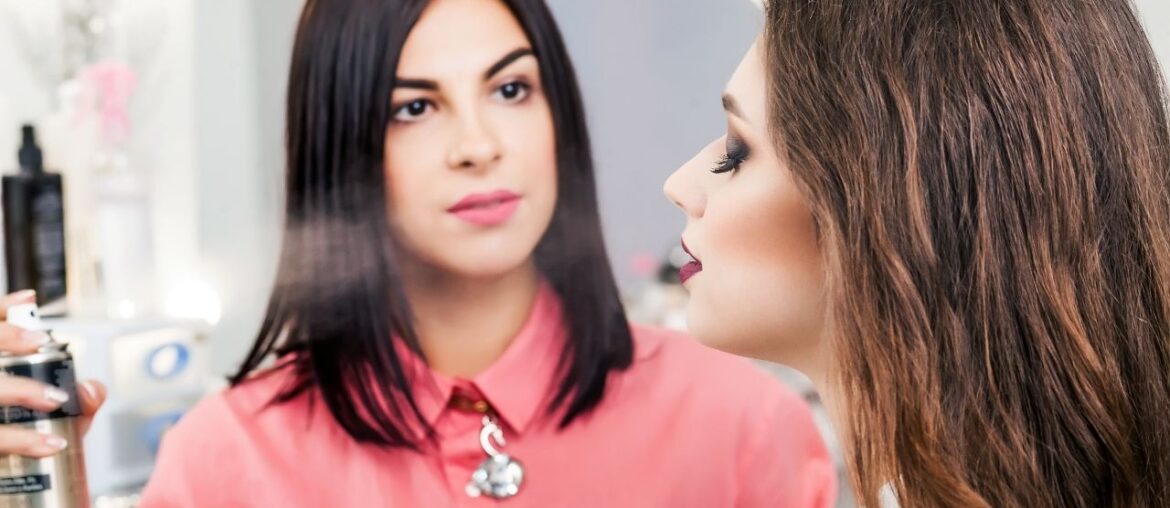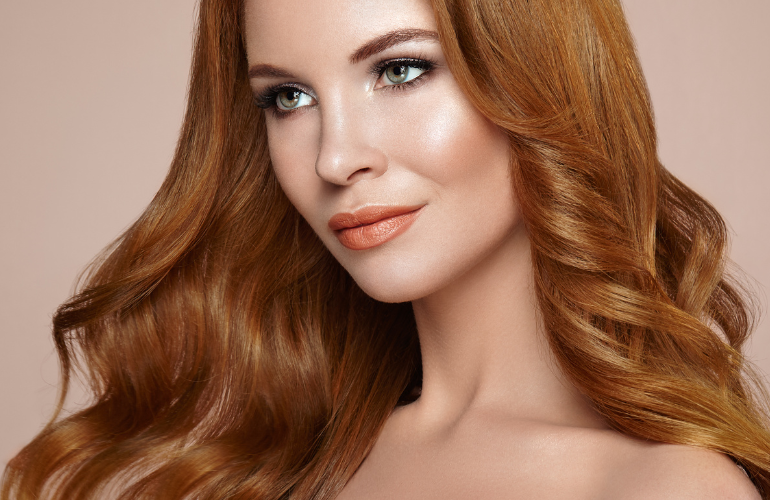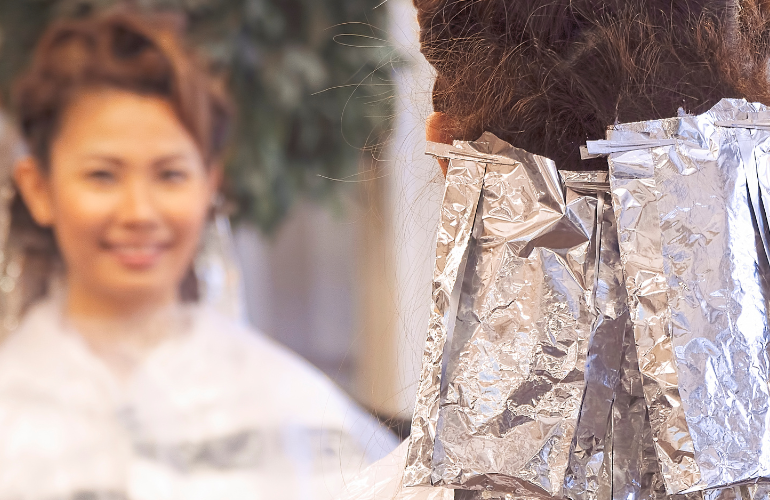Setting spray is a popular beauty product used to set makeup in place. It is often used to keep foundation, blush, and other makeup from smudging or fading. However, setting spray can be expensive and some people may not like the way it feels on their skin. There are a number of alternatives that can be used instead of setting spray.
Makeup is often part of our everyday life as well. Makeup enables one to express their personality. It might even help you feel good about yourself every day. Occasionally makeup will become uncomfortable if makeup is not kept.
It doesn’t matter what foundation you use or eyeshadow you’ve wiped off, or your lips are smeared with. Is there any way to apply makeup properly?
It’s essential to take care that makeup stays fresh all day long. You may buy the affordable spray or buy one for setting.
What is setting spray?
Setting spray is a type of facial mist that contains both alcohol and water. Alcohol evaporates quickly, leaving behind only water.
The setting spray helps keep your makeup in place when sprayed on the face. It also prevents shine and can help prevent breakouts.
What to do if you have no setting spray (Alternatives)
Is using setting spray a must?
It depends on what type of setting spray you’re using. The most common types include aerosol sprays, pump sprays, and roll-on sprays. Each has its pros and cons.
Aerosols work well if you want to cover a large area quickly, but they don’t always last long enough. Pump sprays are great because they provide consistent coverage, but they often leave behind residue.
Roll-ons are easy to apply and remove, and they won’t leave any residue. They’re also effective at covering small areas.
How to set your makeup easily.
Setting spray is a product that helps make your makeup application easier. For instance, it can be used to stop your eyeliner from running when applying eye shadow. The setting spray comes in different forms. Some are aerosols, and others are pumps or roll-ons.
Setting spray vs. primer.
A primer is meant to give your skin a smoother look. It does this by filling in fine lines and pores. This means that it works best for oily skin. Primer is usually applied before foundation, concealer, powder, blush, etc.
Setting spray vs. bronzer
Bronzers add color to your face. They’re meant to enhance your natural beauty. The setting spray adds shine to your face without adding color. If you wear bronzer, you’ll need to find another method to keep your makeup looking shiny.
Setting spray vs. lipstick.
Lipstick provides color to your lips. Lipsticks come in many colors and shades, so finding the
What should I do if I don’t have setting spray?
If you don’t have setting spray, you could try these alternatives:
Use a brush
You can use a brush instead of setting spray. Apply your foundation first, then go back with a meeting and blend out any streaks.
Go matte
You can also use a matte foundation. A matte foundation looks more like skin than other foundations. Matte foundations tend to have less shimmer and sparkle than regular ones.
Use concealer
Apply concealer under your eyes and around your nose. Blend it into your skin with a damp sponge or cotton ball.
Skip foundation
Skip foundation altogether and use moisturizer. Moisturizers are generally lighter than foundations. If you’d rather skip foundation entirely, consider using tinted moisturizer. Tinted moisturizers contain SPF, which protects against sun damage.
Brush cream
Brush cream is available at drugstores. You can also mix your own. Using a soft-bristled brush, sweep across your face and blend away any excess oil.
Brush powder
Use a powder brush to dust off any loose powder. Powder brushes help prevent clumping.
Keep it simple
Keep your makeup simple and stick to neutral tones. Avoid bright colors and bold patterns.
Makeup remover
Makeup removers are available at drug stores. Make sure you choose one that’s safe for sensitive skin.
Set with powder
After you’ve finished your entire routine, dust some translucent powder onto your face. It will set your makeup and protect your dry skin from further irritation.
How do I make the setting spray?
To create your setting spray, follow these steps:
- Mix two parts of water to one part alcohol.
- Add essential oils and fragrances.
- Pour the mixture into a container.
- Seal the container tightly and shake vigorously.
- Store in a cool place.
- Shake well before each use.
When creating your setting spray, the most important thing is to remember to seal the Spray Bottle tightly. Once you open Spray Bottle, the product will start losing its potency.
What should be used instead of spraying?

Spraying your face with a misting spray works great. It helps even out your complexion and keeps your makeup on longer.
It sounds like you want something to set your makeup routine. Try using a setting spray. Spray it all over your face and let it dry completely. Then apply your base. You’ll see how much better your makeup lasts!
I would suggest using a setting spray. Setting sprays works by keeping your makeup in place, and they’re easy to use. They come in many different scents and types.
Some have a lotion-like texture, and others are very thick. The best setting sprays are unscented, so you won’t smell anything unpleasant when you wake up.
I love setting sprays because they keep my makeup looking fresh all day. However, I don’t recommend them if you have oily skin. Oily skin tends to get shiny when you use setting sprays, making your makeup look greasy and heavy.
If you want to try making your DIY MAKEUP SETTING SPRAYS, here’s what you need:
- Alcohol (any kind)
- Essential oil (optional)
- Fragrance (optional)
- Water (enough to fill the bottle)
Mix equal amounts of alcohol and water. Add essential oil and fragrance as desired. Bottle and shake vigorously. Use sparingly and store in a cool place.
To use, spray all over your face and allow to dry. Apply your foundation or moisturizer afterward.
Is spraying necessary?
No. There are plenty of other ways to set your makeup without having to resort to aerosol sprays.
Here are just a few options:
Using a mister or spritzer: A mister or spritzing device works perfectly fine to set your makeup. Just make sure you use a non-aerosol version.
Using a light layer of powder: Powder can also help set your makeup. Soft layers of powder are perfect for everyday wear.
Using a setting spray: If you decide to use a setting spray, make sure it’s unscented. Also, make sure that you only use it once you’ve applied your foundation/moisturizer. Otherwise, you may end up with a sticky feeling.
Using a primer: Primers are usually formulated to give your irritated skin a smooth surface. It allows your makeup to adhere more easily.
Using a finishing powder: Finishing powders are usually formulated to add shine and glow to your skin. These products are great for special occasions.
How can I make my own DIY setting spray?

Setting sprays are great for making your hair look shiny and smooth. The easiest way to create your homemade setting spray is to mix 1 part olive oil with 2 parts water.
Mix well and apply evenly throughout your hair.
Wait about 30 minutes, and then rinse out thoroughly. This method works best when you use shampoo containing silicone.
How to Make Your Homemade Setting Spray
all-natural ingredients
- Cup of pure olive oil.
- Cups of water.
- Tablespoons of witch hazel.
How to Make Your Homemade Setting Spray
- There are a few different types of setting sprays, but they’re essentially just oils in solution, making them primarily transparent so they won’t interfere with your natural color. They also keep your hair from getting greasy while drying.
- You’ll need two main ingredients: oil and water. Olive oil is a common choice because it has anti-frizz properties. Water helps to moisturize your hair. Don’t worry about exact measurements; experiment until you get the right consistency.
- Once you’ve got the mixture looking like this, add some essential oils, such as lavender, rosemary, eucalyptus, tea tree, or peppermint. These oils work by adding a slight fragrance to your hair. If you want something more intense, try mixing several drops into the mixture.
- After letting the mixture sit for at least 15 minutes, strain it through a cheesecloth or a clean coffee filter. Once it’s done straining, pour it into a squeeze glass bottle.
- Shake it before each application when you’re ready to use the spray. Apply it to damp hair, starting at the ends first. Gently rub it through until it reaches roots. Let it dry completely before washing it out with warm water or shampoo.
- Keep your homemade setting spray stored in a cool, dark place away from direct sunlight.
- If you’re looking for a little extra shine, mix a couple of drops of honey into the mixture. Honey adds moisture without leaving behind a sticky residue.
- You can seal the mixture with a clear gloss topcoat for added protection. Some people prefer to leave theirs on overnight.
- You can add essential oils directly into the mixture for a more aromatic scent.
- Don’t forget to wash your hair after using a setting spray! It’s easy to end up with a greasy mess if you don’t.
Make your own DIY setting spray!
Setting Spray Alternatives That Work
Glycerin setting spray
This setting spray contains glycerin, which gives your hair a glossy finish. Glycerin is often used in shampoos that contain silicone, so it should be safe to use. However, if you have sensitive skin, avoid glycerin products.
Sprinkling of Aloe Vera gel and lavender oil
Aloe vera gel is a popular ingredient for setting sprays because it leaves your hair soft and hydrated. Lavender oil is another option since it smells lovely and has soothing properties. You can even combine aloe vera gel and lavender oil for a double dose of benefits.
Setting spray with witch hazel
Witch hazel is an excellent alternative to glycerin because it works well as a conditioner. Use it instead of a regular conditioner when you want to set your hair.
Damp Beauty Sponges
These are tiny sponges explicitly made for applying styling products. They come in many sizes and shapes, so you can pick one that fits your needs best. Damp Beauty Sponge.
Aloe
There are plenty of natural alternatives to commercial setting sprays. Try these three options to create your homemade version.
Glycerin
Glycerin is a common ingredient in commercial hair sprays. It helps keep your hair smooth and shiny, but it also makes it very slippery.
It can make it difficult to style your hair. Instead of using glycerin, try using a moisturizing conditioner instead.
Lavender Oil
Lavender oil is commonly found in commercial hair sprays, but it’s an excellent choice for creating your homemade product.
Lavender oil is known for its calming effects and relaxing properties. It will help calm frizzy hair while keeping it hydrated.
Witch Hazel
Witch hazel is a natural astringent that cleanses the scalp and removes excess oil. It also acts as a mild conditioning agent.
If you like the smell of witch hazel, you can skip the fragrance-free versions and go straight for the scented ones.
Rose Water
Rosewater is a beautiful alternative to commercial setting sprays because it doesn’t contain chemicals or preservatives. It’s gentle enough to use daily, and it won’t dry out your hair.
Rosewater is also naturally fragrant, so you’ll get all the benefits without having to worry about overpowering your favorite perfume
FAQ’s What Can Be Used Instead of Setting Spray?
Can I use hair spray instead of setting spray?
Hair spray isn’t suitable for every situation. For example, it’s not recommended for curly hair. Hair spray tends to work better on straight hair, so it might not do much for you.
Also, hair spray may cause damage to your hair over time.
What’s the difference between a setting spray and a finishing spray?
A finishing spray is meant to be applied after you’ve styled your hair. A finishing spray seals the cuticle layer of your hair, making it more resistant to heat styling tools. Finishing sprays usually include ingredients such as protein, silicones, and oils.
A setting spray is designed to be applied before you style your hair. Setting sprays typically contain alcohol and other drying agents.
These ingredients prevent moisture from getting into your hair, which prevents frizzies and split ends.
How do I apply setting spray?
Spray setting spray onto damp hair, starting at the roots and working toward the tips. The key is to avoid spraying too close to your face. You don’t want to breathe in the mist.
Spray setting sprays directly onto wet hair, then blow-dry with a diffuser attachment.
Use a wide-toothed comb to remove any excess spray.
How long does setting spray last?
Setting spray should last for several hours if used correctly. However, it can start to fade after a few days.
To extend the life of your setting spray, store it in a cool place away from direct sunlight.
Is there anything else I need to know about setting spray?
The setting spray works best when applied immediately before you begin styling. Using it later than 15 minutes before styling could result in a bit of hold.
If you’re using a flat iron, make sure to wait until the iron has completely cooled down before applying the setting spray. It will ensure maximum protection against burning.
You might experience some flaking with setting spray if you have incredibly oily skin. Try using a light moisturizer beforehand to help reduce this problem.
When using setting spray, keep in mind that it’s essential to rinse off any residue thoroughly. Otherwise, you risk leaving behind a greasy feeling that will only add to your woes.
Is spray setting a must?
No! If you’re looking for a quick fix, you can always opt for a leave-in conditioner. Leave-ins are great for adding shine and texture, but they aren’t nearly as effective as setting spray at keeping your strands smooth and frizz-free.
However, if you’d like to give the setting spray a try, here are a few things to consider:
It’s okay to use the setting spray once or twice per week, but you shouldn’t use it more often than that.
Use sparingly—don’t go overboard with setting spray. Too much product can weigh your hair down and lead to breakage.
Avoid using setting spray on damaged hair.
Set aside a small amount of money each month to buy new products. It’ll save you lots of time and money in the long run.
What Else Can You Use as Makeup Setting Spray?
Other things that you can use as makeup setting spray are hairspray, dry shampoo, perfume, hair gel, body lotion, lip balm, and even toothpaste!
Can You Use Water as Setting Spray?
Yes, it works well for setting spray.
Since this has essential oils, can I store this in a plastic bottle?
Essential oils are highly flammable and should be stored in glass bottles only. Plastic bottles may cause them to break down into smaller components.
What other essential oils would be good in this recipe?
It can add essential oils at any point during the process. You could add them after you’ve made the dough, before baking, or even while you’re cooking. They will all work well with this recipe.
I have sensitive skin. Can I leave out the rose water?
Yes! You can use any essential oil instead of rose water.
Can I replace the rose water with chamomile or lavender water?
It can replace Rosewater with any essential oil. Lavender or chamomile are both great options for an alternative scent.
Final thoughts
Setting spray is one of those products that you either love or hate. I’m a big fan of setting spray because it helps me achieve beautiful, shiny styles without having to spend countless hours curling my hair.
I hope these tips have helped you learn how to use setting spray effectively. Good luck!









